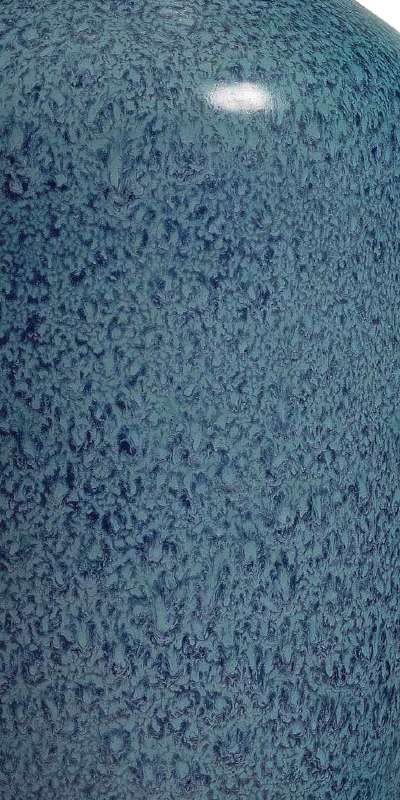
Robin's-egg glaze is an opaque turquoise-blue glaze suffused overall with a finely mottled dark purplish blue. This example of the Qianlong period 1736-95.
A Jingdezhen low-fired speckled opaque turquoise and blue glaze, developed in the 18th century. It mimics the color and texture of a robin's egg. It features a distinctive mottled bluish-green appearance, achieved through a specialized glazing process involving the use of manganese, copper oxide and sometimes cobalt for color, as well as other materials like arsenic and lead oxide to create the glaze's characteristic speckled effect.
It is a bi-color glazing technique, the blue glaze being applied as a simple all-over coat and the turquoise being blown on, to produce a delicate strippled effect.
'Robin's egg' glaze was used from the Yongzheng period until the 19th century. Its Chinese name is Lujun (炉钧) which can be translated as "furnace Jun" or "kiln Jun". The term "Lu Jun" links this glaze to the tradition of Jun ware of the Song Dynasty, and because it was fired at a lower temperature than the porcelain itself.
It has remained popular until today and is typically found on delicate scholars objects from the late Qing and Early Republic period.
Suggested literature: Regina Krahl, Chinese Ceramics from the Meiyintang Collection, London, 1994-2010, vol. 2, no. 923.
A